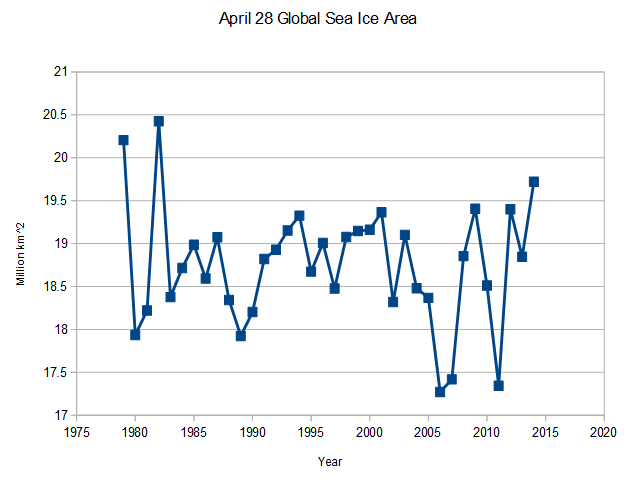Based on three outlier years, crack government scientists determined with 99% certainty that the poles were melting down.
By Joe Romm on Sep 22, 2010 at 6:26 pm
Serreze: “I stand by my previous statements that the Arctic summer sea ice cover is in a death spiral. It’s not going to recover.”
arctic.atmos.uiuc.edu/cryosphere/timeseries.global.anom.1979-2008



Just using the Mk1 eyeball ignoring two exceptionally high and three exceptionally low years there seems to be a general upward trend.
You are a complete schmuck. You ignore two exceptionally high years at the beginning of the sample and three exceptionally low years at the end of the sample and you say there seems to be a general upward trend. And you phrase it like, yeah, you cancel two high ones and 3 low ones to make it sound equal, the way liberal assholes always do.
Like I said, you are a total schmuck. Despicable.
Antarctic sea ice area is currently over 500,000 sq km. HIGHER for this date than has previously been recorded in the (admittedly pitifully short) satellite record.
Can you imagine the unprecedented alarmist hysteria that would be generated were it setting records 500,000 sq km LOWER than previously recorded?
As it is, ***crickets***
1979 is a huge cherry pick as a starting date. If you started in 1939 or 1949, you impression would be far different.
Beam yourself back to 1939 with some satellites and rockets and get us some data!
As said elsewhere, 1979 is when satellites began recording the data.
There are satellite sea ice records going back to the 1960s. The 1990 IPCC report had satellite graphs going back to 1973.
1979 is a cherry pick.
Actually, no. They started earlier. But the earlier data was “lost”. Wonder why?
Only the early years were higher. Given the cold spell we were coming out of, that is not surprising.
Would you mind posting the Excel file? I’d like to add a trendline and see what it looks like with finer groupings.
Is this the sea ice level on April 28th, and only April 28th, of each year?
Climate Science = the new age mythology.